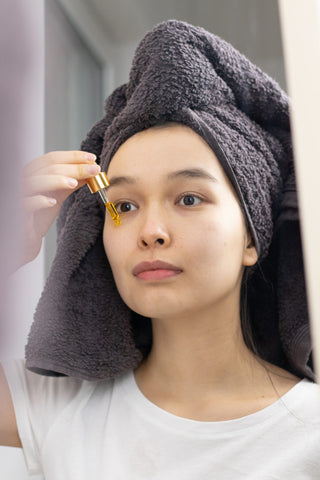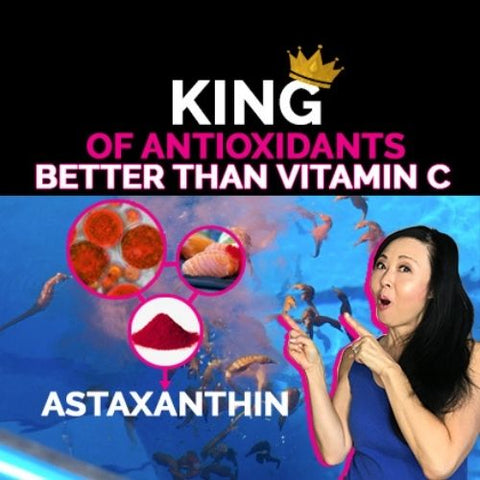Hyperpigmentation: Understanding how it affects your skin type
is NOT about if you have Dry, Normal, Aging, Acne or oily skin.
The specific skin type we are referring to is where you are on the Fitzpatrick Scale Skin Type may affect how your skin responds to hyperpigmentation and how effective the hyperpigmentation treatments are.
Understanding how your individual specific skin type is KEY to treating sun damage and hyperpigmentation.
Just because a treatment worked for your friend, family member, or co-worker, it doesn’t mean it will necessarily work for you.
Here is a link to an assessment you can do to see what category you are under:Fitzpatrick Scale Hyperpigmentation Assessment
All Hyperpigmentation is NOT the Same:
In all my years of treating clients for hyperpigmentation, whether it was for acne scars, age spots or Melasma, each skin responds very differently to treatment,Therefore there is NOT ONE WAY to treat hyperpigmentation.
Hyperpigmentation and understanding how it affects your skin type will greatly determine the hyperpigmentation treatment.
For example, treating hyperpigmentation on someone who has sensitive skin, and prone to redness is very different than treating someone who has dark skin, and has stubborn hormonal melasma.Each treatment protocol will be different.
This post is dedicated to my Australian viewers since they have requested this post.
In this post as well as my video posted, we will discuss:
- . Three different types of hyperpigmentation
- Internal vs External Causes
- The different skin types and how it responds to UV exposure
3 Main Types of Hyperpigmentation
Hyperpigmentation is an over production of melanin in which areas of the skin can form spots to patches of darker colored skin than the surrounding area.
Letingines (Age Spots/ Liver Spots) – Most common form.These spots are more common with age.These spots are found on over 90% of light skinned individuals over the age of 60.
This is more related to age more than sun exposure.However, sun exposure can exacerbate the appearance of age spots.
Post Inflammatory Hyperpigmentation – These are dark spots or patches from acne to eczema, psoriasis or other inflammatory conditions.
These are basically “scars” from the lesion or rashes left behind.The color can range from red to very dark brown, depending on your skin tone and your ability to tan.
Darker skin types tend to struggle with fading this .
3 Most Effective Ways to Lighten Acne Scars and Age Spots
Melasma- Unlike the post inflammatory hyperpigmentation, Melasma is more stubborn to treat and the appearance of Melasma is the blotchy brown patches usually occurring on the face, but can occur on the neck, chest, underarms, or anywhere there is regular sun exposure.
Melasma is usually brought on by sun exposure and hormones such as pregnancy (a.k.a. Pregnancy Mask) , birth control pills, or any other hormone treatments.This type is by far the most difficult to treat.
Although this not under type of hyperpigmentation, there is another condition that can cause hyperpigmentation called
Phytophoto Dermatitis– (Margarita Dermatitis or Berloque Dermatitis)
This is a form of dermatitis that when certain plant chemicals interact with sun exposure, can cause blisters or just red itchy skin .
It can also cause hyperpigmentation in the forms of drips or streaks . These are caused by lipofuscin instead of melanin.Lipfuscin are yellowish brown pigments that are caused by age instead of the sun.
Some of the plants that are known to cause this are citrus fruits namely limes, celery, figs, parsely, parsnips ,etc
They are not only found on the skin but also on major organs such as the liver, kidney, heart,etc.
Another form of hyperpigmentation is Drug Induced Hyperpigmentation (DIH) .Drug induced hyperpigmentationtakes on a more diffused appearance of hyperpigmentation.
This leads me to my next point of :
Internal vs External Factors of Hyperpigmentation
Hyperpigmentation Causation by internal factors:
-Drugs- Certain Antibiotics, cancer drugs, anti seizure drugs
-Hormones
-Stress-affects hormones which then can affect hormones
-Diet
-Medical Treatments (such as surgery)
-Any other factors that can affect changes in the body’s everyday functions (Menopause,Addisons Disease, Hypothyroidism, Cushings Disease)
External Factors that cause Hyperpigmentation:
Environmental such as
-Over exposure to the sun
-Allergies
-Clothing-constant rubbing- common areas-under the arms, in between the inner thighs
-Chemicals- Could be fragrance in deodorant-i.e. hyperpigmentation under the arms.
Even hydroquinone, a common topical treatment used to treat hyperpigmentation can increase hyperpigmentation.
Each persons skin is different so both internal and external factors will influence melanogenesis differently.
Also, where you are on the Fitzpatrick Scale can also influence hyperpigmentation and treatment for hyperpigmentation.
Hyperpigmentation and Fitzpatrick Scale: Understanding your Skin type:
The Fitzpatrick Scale was developed by Dr. (also PhD) Thomas B Fitzpatrick in 1975.
This chart basically has different classifications to show what type of skin you may have and how your skin may respond to UV exposure.
Now according to these categories, which one are you?
Fitzpatrick Skin Type 1: These are some of the more common characteristics:
-Ivory/Porcelain Skin (before sun exposure)
-Light blue/light gray/or light green eyes
-Naturally blonde/red hair
When exposed to sun, the skin:
-Always burns
-Always Peels
-Does not tan
-freckles are common
Fitzpatrick Skin Type 2: Common characteristics are:
-Darker shade of white skin-has a golden tone
-Hazel or brown eyes
-naturally dark blonde/light brown hair
When exposed to sun the skin:
-May freckle
-Occasionally burns
-Occasionally tans
Fitzpatrick Skin Type 4-Common Traits
-Olive ~Light Brown skin
-Dark brown eyes
-Dark Brown hair
When exposed to sun the skin:
-Doesn’t usually freckle
-Doesn’t usually burn
-Tans more often than burns
Fitzpatrick Skin Type 5: Common Characteristics
-Brown ~Dark brown skin
-Dark brown eyes
-Dark brown or black hair
When exposed to sun, the skin:
-Rarely freckles
-Hardly ever burns
-Almost always tans
Ftizpatrick Skin Type #6- Common Traits
-Very Deep dark brown to darkest brown (before sun exposure)
-Brownish black eye color
-Natural Hair is black
The skins reaction to the sun:
-Never freckles
-Never burns
-Always tans dark
These are the 6 types .However you can take a self assessment and see what category you are.The chart I chose is put out by the Australian Government .I like this one because it shows you images of people who have similar coloring that illustrates the coinciding category of the skin type to help you better identify where you may fall.
The better able your skin can tan, the more likely you are to develop hyperpigmentation.
The better you understand what may cause your hyperpigmentation, the better educated you will be in choosing the right ingredients, products and treatments for you.
Stay tuned for more in our hyperpigmentation series and remember, “Make Up is an Art and Skin Care is a Science.”
Follow us @:
YouTube Channel: https://www.youtube.com/channel/UC4XGWX6eheTisHo8UBsdOWA
Instagram: @GoSeeChristy
Facebook: https://www.facebook.com/goseeChristyBeautyBoutique/
Twitter: https://twitter.com/goseechristy
Pinterest: https://www.pinterest.com/goseechristy/
Sources:
https://www.arpansa.gov.au/sites/default/files/legacy/pubs/RadiationProtection/FitzpatrickSkinType.pdf
https://www.ncbi.nlm.nih.gov/pmc/articles/PMC4165764/
https://www.ncbi.nlm.nih.gov/pmc/articles/PMC5418955/
https://www.ncbi.nlm.nih.gov/pubmed/20725554




